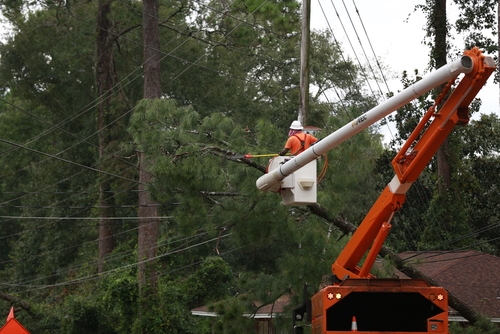Planning for grid resiliency and recovery moving to the next level

SAN ANTONIO – Communications, communications, technology, and more communications are driving the efforts of utilities and regulators to better prepare for power grids to withstand and recover from major weather-related outages.
Customer demands for more and better information about the restoration of their power have added an even greater sense of urgency to the planning necessary to increase the resiliency of the grid at a time when climate change has coincided with a seeming uptick in extreme weather that can knock-out electricity in wide areas for days at a time.
Resiliency strategies vary from region to region, but not many areas of the United States are immune to familiar meteorological shocks, such as severe windstorms, blizzards, and hurricanes, not to mention earthquakes, wildfires and the threat of cyberattacks.
Participants in a panel discussion on grid resiliency staged by the Institute for Electric Innovation (IEI) concluded that disaster prevention and recovery needed to be taken to an entirely new level that would include more-comprehensive and precise planning and also deploying more technical resources to not only get their customers’ lights back on, but also businesses and communications networks back online as quickly as possible.
“We have mutual-assistance plans that are very effective, but is that enough?” said Lisa Wood, who serves as IEI executive director, vice president of Customer Solutions for the Edison Electric Institute (EEI), and also vice president of The Edison Foundation. Are we really prepared for this so-called new normal and … do we have the regulatory flexibility to get us where we need to be?”
The panel, held on the sidelines of the National Association of Regulatory Utility Commissioners (NARUC) Annual Meeting and Education Conference, was a clarion call for regulators to be proactive in bringing together as many stakeholders as possible to work out plans for a myriad of scenarios with the goal of designing the grid to withstand potentially devastating events and, if needed, getting repair crews to the right place with the right tools needed to restore power as seamlessly as possible.
Julie Brown, a member of the Florida Public Service Commission, said her agency already gained hard-earned experience from the string of hurricanes that have slammed her state in recent years. “It forced the commission and the IOUs (investor-owned utilities) to look at what can be done to improve the bulk grid,” Brown said. “We took a multi-faceted approach to look at vegetation-management and pole-inspection programs, a really robust effort.”
“The commission also wanted to look at how the grid hardening had worked and how restoration times had improved since 2005,” she added. “But there are also things outside the control of the utilities that we were looking at to provide a recommendation to the legislature, which we did.”
Brown likely piqued the interest of the attendees by hinting that Florida could take a potentially game-changing step forward on the financial side of the resilience equation, although she cautioned that she could not yet share any details. “It addresses cost recovery,” she said. “Instead of putting storm-hardening efforts in fixed rates, it could be recovered on an annual basis through a cost proceeding.”
Any new funding in any state would quickly find a home in a utility’s emergency services budget. A shopping list of new ideas from the technology industry is coming online that will help deploy repair crews into the field and provide a welcome assist in untangling the mess of downed lines, toppled poles, and all manner of damaged equipment.
Moreover, drones are already taking flight over disaster scenes, and futuristic concepts including augmented reality and advanced mapping will soon be making their way to utility planners, managers, and even field linemen in the very near future.
“Utilities are in a collaborative process with the regulators in looking at what types of investments would address the state’s policy directives and looking at cost-effectiveness and ultimately creating a set of investments – and then how those costs are going to be recovered,” said Brad Williams, vice president of Industry Strategy for Oracle Utilities.
He added, “Where do you get the biggest bang for the buck?”
